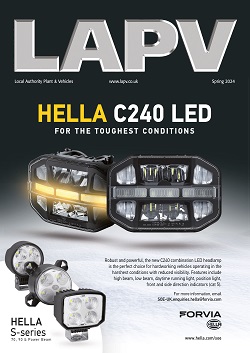It is estimated that particle pollution is responsible for 29,000 early deaths in the UK each year, of which around 3,500 are in London, said Dr Gary Fuller, air pollution scientist at King's College London. Pollution shortens the lives of all Londoners by 16-18 months on average. Like many European cities, London does indeed have an air quality crisis.
Just how bad is London's air? Well, the city isn't yet meeting 2010 targets for NO2 (nitrogen dioxide), and is unlikely to for the next 10-15 years, said Dr Fuller. 2016 data reveals that fewer than half of the sites where measurements were taken achieved their annual mean objective for NO2. Eleven sites recorded twice the legal limit and 24 exceeded the hourly limit. The main source of NO2 pollution is vehicles, especially diesel.
The news is more positive for particle pollution, with all sites below 2020 EU target for PM 2.5. However, only one site achieved the World Health Organisation target.
Why is London failing to control its air pollution? 'Because there is a disparity between the real-world performance of vehicles and the tests they have to pass,' said Dr Fuller. He explained that while petrol cars largely follow their lab test performance, this is not the case for diesel. In the worst cases, diesels can emit 14 to 15 times more NOx on the road than in a test. 'The permitted levels have been reduced, but real-world performance hasn't really changed. That is why we have made so little progress'
Euro 6 diesel cars are better, but not good enough. The exception is Euro VI for HGVs, which has delivered a real difference in NOx emissions compared with the Euro 6 vehicle. And one third of London's roads are actually seeing an increase in NOx.
A key issue highlighted by Dr Fuller is the changing source of particle pollution. While particles from exhaust are generally decreasing, this is offset by an increase of particles from wear and tear on brakes, tyres and roads. The increased use of open disc rather than sealed-drum braking technology is partly responsible, but also heavier vehicles, including electric vehicles, which cause more wear and tear. 'We are seeing increased pollution from wear particles but there are no policies in place to deal with this,' said Dr Fuller.
Identifying the most effective strategies for curbing air pollution is difficult. In European cities, the LEZ is the weapon of choice because it restricts access to vehicles on the basis of age. London's LEZ is Europe's largest and began in 2008. A comparison of data for HGVs in London and Paris, which is only now introducing an LEZ, shows that these zones do deter older vehicles and therefore work as a traffic measure. However, they are not so effective in terms of air pollution because the newer vehicles ' with the exception of Euro VI HGVs ' aren't much better than the older ones that are excluded.
'London's ULEZ for 2019 is a bold proposal,' said Dr Fuller, but he stressed it should not be viewed as a tax. 'This is often framed in terms of charging vehicles, but actually it is about discouraging them. We don't want to tax these older vehicles because that doesn't help air pollution, we just don't want them in the zone'
Given that the age of vehicles is no true indicator of real-world performance, how can fleet operators choose vehicles that positively contribute to the air pollution crisis? Dr Fuller highlighted an index of real-world test data that is being compiled by a company called Emissions Analytics. 'Procurement departments should look at this and choose vehicles that perform best in the real world. Purchasing habits can help to drive up standards with manufacturers because emissions reduction depends on manufacturers'

